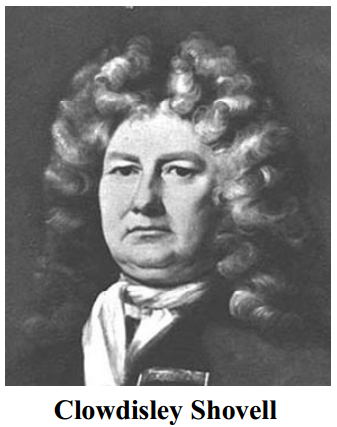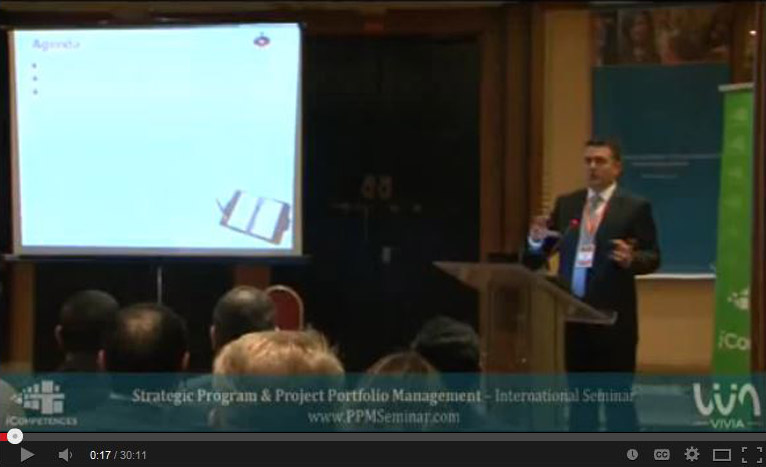Video - Jamal Moustafaev - How To Implement Project Portfolio Management? presentation at a PPM Conference in Casablanca, Morocco
Submitted by Jamal Moustafaev on Wed, 04/30/2014 - 14:51The "How To Implement Project Portfolio Management?" presentation at the PPM conference in Casablanca, Morocco in 2012
Video - Jamal Moustafaev - How To Deliver Exceptional Project Results? presentation at a PPM Conference in Casablanca, Morocco
Submitted by Jamal Moustafaev on Wed, 04/30/2014 - 14:49A presentation I did at the Project Portfolio Management conference in Casablanca, Morocco in 2012
Video - Jamal Moustafaev - Project Portfolio Management Keynote at the Vancouver Board of Trade - Q&A
Submitted by Jamal Moustafaev on Wed, 04/30/2014 - 14:17The "Questions and Answers" portion of my Vancouver Board of Trade keynote on project portfolio management. Very interesting and thoughtful comments and inquiries from the participants.
Video - Jamal Moustafaev - Project Portfolio Management Keynote at the Vancouver Board of Trade
Submitted by Jamal Moustafaev on Wed, 04/30/2014 - 13:09In the modern business landscape where lean resources are the norm, are your teams optimized to deliver exceptional project results? This presentation will focus on the key question facing executives and project managers alike: "what does it take to deliver great projects and/or products?
Book - Delivering Exceptional Project Results now available in a variety of electronic formats
Submitted by Jamal Moustafaev on Wed, 04/30/2014 - 12:36\
Book - Delivering Exceptional Project Results: A Practical Guide to Project Selection, Scoping, Estimation and Management
Submitted by Jamal Moustafaev on Wed, 04/30/2014 - 12:23My first book "Delivering Exceptional Project Results: A Practical Guide to Project Selection, Scoping, Estimation and Management" was released by J. Ross Publishing in September 2010!

Brief Synopsis:
This unique how-to implementation guide unifies project management, portfolio management, and requirements engineering into one proven, comprehensive best practice framework to help organizations deliver exceptional project results on a consistent basis. Delivering Exceptional Project Results transcends differences in the various “types” of project management, such as traditional or agile, and focuses on economic principles, methodologies, skills, tools, and techniques that can be applied successfully at companies in any industry.
Article - Kick-Starting Your Projects; What You Should Know about Defining Scope
Submitted by Jamal Moustafaev on Wed, 04/30/2014 - 08:19M 247 "Sergeant York" story
In late seventies the US Department of Defense (DOD) outsourced the development of the self-propelled anti-aircraft (AA) weapon which featured twin radar-directed 40 mm rapid-fire guns to Ford Aerospace. The project was assigned the name of ”Sergeant York”, after the World War I US army hero, who undoubtedly would not have appreciated this dubious honor had he been alive in 1979. The weapon was intended to replace the M163 Vulcan Air Defense System and fight alongside the M1 Abrams and M2 Bradley fighting vehicles in the U.S. Army, and was similar in concept to successful Soviet and European systems such as the ZSU-23-4 and Gepard
In essence it was an air defense weapon mounted on the surplus M48 Patton tank chassis, provided by the Army, which were held in large quantities in their depots. The main job of the weapon was to sit on the front lines and automatically target and shoot down enemy aircraft, especially helicopters. As a result it was designed to hone in on metal parts rotating in the air (i.e. propeller blades).
The final test of the AA gun involved a demonstration involving a prototype weapon shooting down a hovering helicopter on one of the US DOD proving grounds somewhere in the desert in the southern part of the United States. The cost of the project at that time was approximately US $1 billion.
According to the legend cultivated in the aerospace and defense industries there was a portable toilet installed not far away from the testing grounds. Because of the hot climate, the toilet cabin had a small electric fan in it …
You probably managed to guess the rest – the billion dollar piece of equipment “decided” to ignore the much larger target – the helicopter – and targeted the unique signature of the “port-a-potty’s” electric fan!
Further tests revealed that the AA gun had the following deficiencies:
- The radar could not track low flying targets due to excessive ground clutter
- The radar could not distinguish a hovering helicopter from a clump of trees
- Turret traverse was too slow to track a fast crossing target
- The radar can be jammed very easily
As a result, the project that began in 1975 was finally cancelled by then Secretary of Defense Caspar Weinberger in 1985.
Article - Who Needs Walkthroughs, Inspections and Peer Reviews?
Submitted by Jamal Moustafaev on Mon, 04/28/2014 - 14:27

